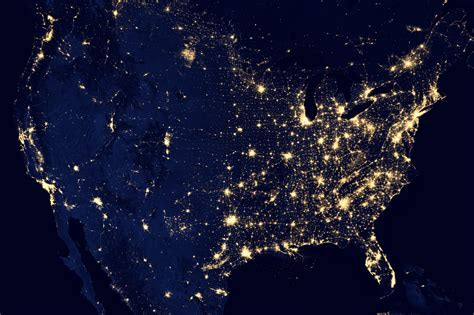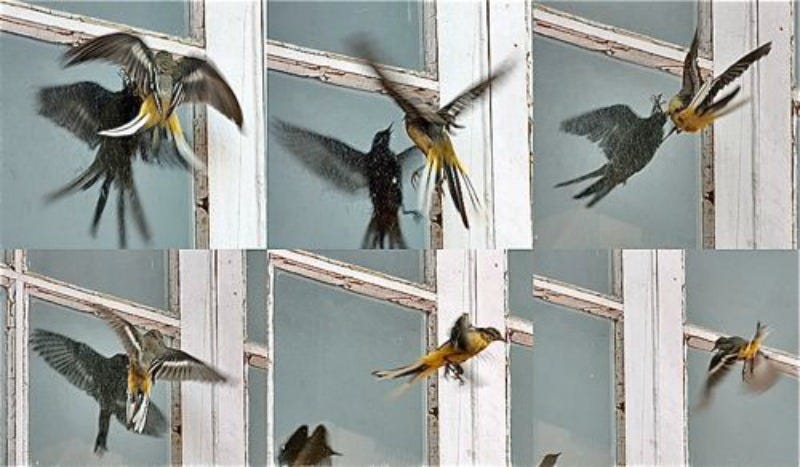Artificial light affects bird migration
Artificial light may be attracting migrating birds to take their rest stops in some hazardous areas
I’d just like to say a big Thank You to all of you who have supported The Green Dispatch in 2024. Producing this environmental newsletter is one of the most rewarding things I’ve ever done, and you all make it possible.
Free subscriptions will of course remain free, and the access free subscribers have to The Green Dispatch will remain unchanged. But if you want the benefits of a full subscription, please note that at the end of December, the yearly subscription price of $30.00 is going to be raised back to the original $40.00/yr. You have two weeks to take advantage of the bargain basement subscription fee.
I’ll be taking next Friday off for Christmas, resuming publication on Friday, December 29. I wish you all the best for the holidays!
Artificial light and bird migrations
Back in the early seventies, light pollution was beginning to be recognized as a problem. It was thought of as more of a nuisance than anything else, obscuring the night sky for stargazers and making science more difficult for professional astronomers.1
In more recent years, however, scientists have recognized light pollution as a threat to birds. Nighttime lights can confuse birds, causing them to fly into each other or to fly into buildings. Birds can also wind up circling light sources instead of progressing on their migrations. The time and energy wasted in such circling can interfere with the success of their migrations and ultimately endanger the birds’ lives.2
Confounding matters, it seems that our nighttime lights are attracting migratory birds. In a recent paper, scientists share their discovery that North American birds, in making their migration stopovers, are choosing habitats close to the light pollution phenomenon of skyglow.
Migratory birds travel hundreds, sometimes thousands, of miles on their twice-a-year journeys. Like people stopping at hotels overnight on long road trips, migrating birds also need places to stop, rest and refuel. Birds can sometimes double their body weight, storing fat (energy) for their long treks during these stopovers.
Skyglow is caused by light hitting and being diffused by water vapor and other particles in the atmosphere. Starlight, moonlight, and other sources create skyglow, even in the most pristine night skies. Skyglow is greatly increased from streetlights and other manmade sources—it’s that ghostly glow you can see over cities—and is considered a form of light pollution. No one knows why, but it is to these light-polluted areas that migrating birds seem to be attracted.
The authors of the paper write that light pollution can attract birds to use stopovers that are “ecological traps.” These traps might be thought of as the junk food of nature, habitats that are attractive to critters but aren’t good for them in the long run. Stopping in areas with greater skyglow basically means that birds are stopping at habitats close to humans, which jeopardizes their lives. Being close to humans, birds are also more likely to become victims of domestic cats. This is no small matter. Domestic cats kill between 1.3 and 4 billion birds in in the contiguous 48 states each year.
Stopping over adjacent to cities, birds are more likely to collide with buildings and towers, a grizzly phenomenon that takes many of their lives. Between 365 and 988 million birds die each year in the United States due to building collisions. Birds are more likely to collide with buildings during bad weather, which causes the birds to make mistakes. Birds can become confused when sunlight is reflected on windows. Windows can also be invisible to birds.
In early October, weather conditions, an uptick in migration, and nighttime lights led to more than 1,000 birds colliding with a single building in Chicago. Large buildings are not the only problem. More than half of bird collision deaths occur with low-rise buildings. Around 44 percent of these fatalities happen when birds fly into homes and condos.
Other recent research has found that nighttime lights can cause some species of songbirds to advance the time of their migration by as much as a week. Other researchers have found that artificial light can decrease the connectivity of migratory habitats, making migrations more arduous and dangerous.
Night lights, loss of habitat, domestic cats, and other reasons have caused a decline in avian life. In the last 50 years, North America has lost nearly three billion birds.
How the authors did their science
I’m often astonished by the ingenious methods scientists find to do their work. This study is one example. The authors used data gathered by the Next Generation Weather Radar system, a continent-wide network of 160 high-resolution weather radars that are jointly operated by the National Weather Service, the Federal Aviation Administration, and the Air Force. Your local weather forecast relies on this system.
Besides picking up the movement of clouds and cold fronts, for the last 75 years this radar system has also detected flocks of birds and their movements. The scientists were able to extract this data, and lots of it: more than 10 million observations of birds and their migrations. They were also careful to exclude from their science extraneous data, such as flights of bat colonies, which could have corrupted their results.
The researchers used satellite data from the Earth Observation Group to calculate skyglow. The scientists included precipitation, elevation, forest cover, and other factors. Their study included the almost 500 migrating bird species of North America. The results of their research were published in the journal Nature Communications earlier this month.
The authors also considered some questions prompted by their research. Are the birds choosing these hotspots solely because of the skyglow? Or are these stopovers historically where birds stopped in the first place? Is there a combination of the two factors at work? What interplay is there between light pollution and land use changes that affects bird migration? As with just about every other research paper, the mantra, “more research needs to be done” seems to be quite apt here.
X (You can find me on that thing formerly known as Twitter.)
James C. Cornell Jr. 1971. Light pollution from a growing tucson threatens 'astronomy capital of the world': Light pollution threatens 'astronomy capital'. New York Times (1923-), Jun 20, 1971. https://www.proquest.com/historical-newspapers/light-pollution-growing-tucson-threatens/docview/119266259/se-2 (accessed December 13, 2023).
Chokshi, Niraj. 2019. Birds' urban predator: Bright buildings. New York Times (1923-), Apr 11, 2019. https://www.proquest.com/historical-newspapers/birds-urban-predator-bright-buildings/docview/2748025968/se-2 (accessed December 13, 2023).





The experiment would be to find a city that was willing to go dark(er) for a few weeks during migration and see if it had an effect.
Putting cutout silhouettes of sharp winged hawks (sharp-shinned, Cooper’s, and goshawks) in windows help deter collisions, especially for buildings near trees.